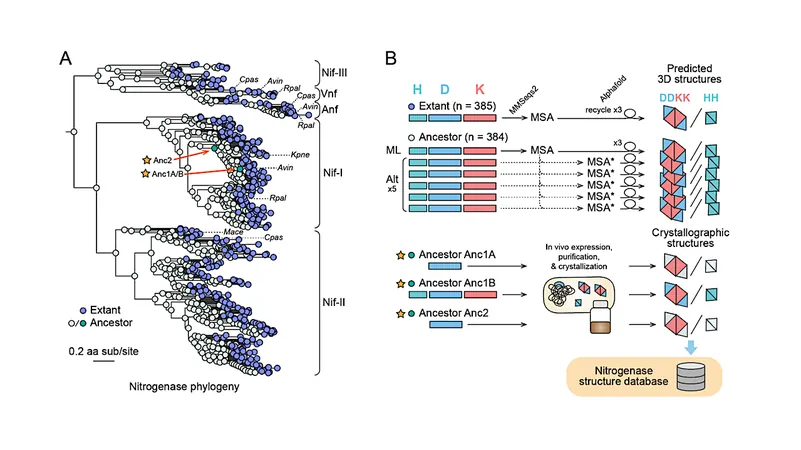
Unlocking the Secrets of Nitrogenase: A 3.5 Billion-Year Journey
2025-04-12
Author: Mei
Life on Earth has a remarkable history, dating back over 3.5 billion years. Throughout this immense timeframe, organisms have not only adapted to their environments but have also transformed the planet itself.
Among the key players in this evolutionary saga are ancient enzymes that have withstood dramatic planetary changes. While genetic data often provides insights into these evolutionary journeys, the structural evolution of enzymes—their physical forms—remains significantly underexplored.
In a groundbreaking study, researchers focused on nitrogenase, a vital enzyme responsible for nitrogen fixation, essential for the survival of countless life forms. This enzyme has benefited from diverse microbial hosts but is limited by several factors, such as extreme sensitivity to oxygen and high energy needs.
By employing a unique blend of methods—including phylogenetics, ancestral sequence reconstruction, and cutting-edge deep-learning techniques—scientists were able to reconstruct the structural timeline of nitrogenase, spanning an astonishing three billion years.
This study is the first of its kind to predict both existing and ancestral forms of the nitrogenase enzyme, resulting in the creation of more than 5,000 structural models.
These findings establish a crucial framework for understanding the structural constraints that shape protein evolution, allowing researchers to examine ancient enzymes in relation to significant phylogenetic and environmental changes throughout geological history.
The comprehensive analysis revealed patterns in nitrogenase's sequence and structural diversity, paving the way for deeper understandings of how these ancient biochemical marvels have persisted and adapted over eons.

 Brasil (PT)
Brasil (PT)
 Canada (EN)
Canada (EN)
 Chile (ES)
Chile (ES)
 Česko (CS)
Česko (CS)
 대한민국 (KO)
대한민국 (KO)
 España (ES)
España (ES)
 France (FR)
France (FR)
 Hong Kong (EN)
Hong Kong (EN)
 Italia (IT)
Italia (IT)
 日本 (JA)
日本 (JA)
 Magyarország (HU)
Magyarország (HU)
 Norge (NO)
Norge (NO)
 Polska (PL)
Polska (PL)
 Schweiz (DE)
Schweiz (DE)
 Singapore (EN)
Singapore (EN)
 Sverige (SV)
Sverige (SV)
 Suomi (FI)
Suomi (FI)
 Türkiye (TR)
Türkiye (TR)
 الإمارات العربية المتحدة (AR)
الإمارات العربية المتحدة (AR)